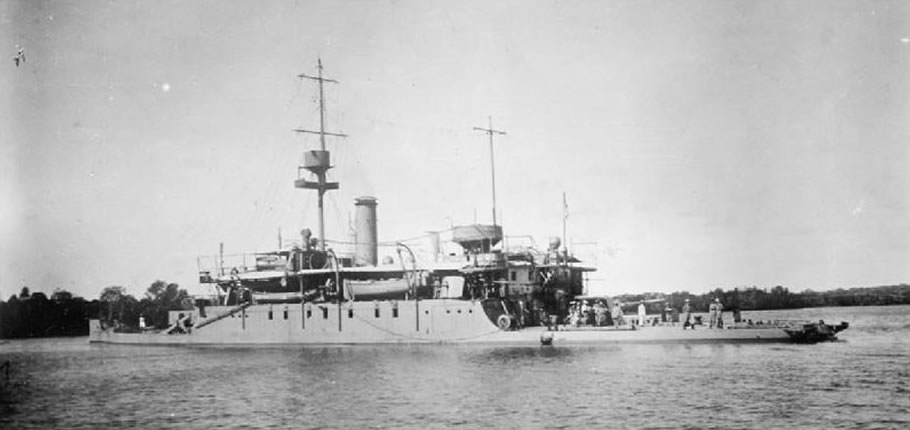
Sloops, Drifters & Monitors – World War 1
Sloops
In the 18th and most of the 19th centuries, a sloop-of-war in the British Navy was a warship (also known as one of the escort types) with a single gun deck that carried up to eighteen guns. As the rating system covered all vessels with 20 guns and above, this meant that the term sloop-of-war actually encompassed all the unrated combat vessels including the very small gun-brigs and cutters.
HMS Godetia
- Type. Sloop
- Class. Arabis
- Builder. Connell
- Ordered. 1915
- Laid Down. 1915
- Launched. 08/01/1916
- Commissioned. 1916
- Speed. 17 knots
- Fate. Scrapped 26/02/1937
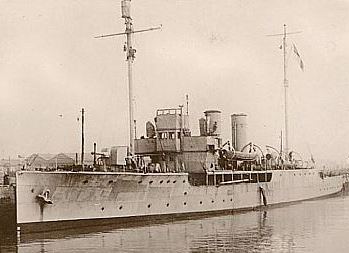
HMS Godetia
HMS Godetia was an Arabis-class sloop launched on the 8th January 1916; she had a deep load displacement of 1350 tons. For a short while she served in the Arctic, and on 9 May 1923 a trawler from Hull – the Lord Astor – was seized by a Russian gunboat off the coast of Murmansk for alleged illegal fishing. The trawler was captured after Godetia returned briefly to Norway to re-coal and resupply. The Godetia was soon relieved by HMS Harebell under Captain Evans, commander of the fishery protection cruiser squadron. Godetia was broken up in 1937.
Drifters
A Naval Drifter is a boat built along the lines of a commercial fishing drifter but fitted out for naval purposes. The use of naval drifters is paralleled by the use of naval trawlers.
Fishing trawlers were designed to tow heavy trawls, so they were easily adapted to tow minesweepers, with the crew and layout already suited to the task. Drifters were robust boats built, like trawlers, to work in most weather conditions, but designed to deploy and retrieve drift nets. They were generally smaller and slower than trawlers. If requisitioned by navies, they were typically armed with an anti-submarine gun and depth charges and used to maintain and patrol anti-submarine nets.
HMD Cape Colony
- Type. Drifter
- Class. None
- Builder. S. Richards & Co
- Ordered. 1907
- Laid Down. 1907
- Launched. 1908
- Commissioned. 1914
- Fate. Sank 08/01/1917
-
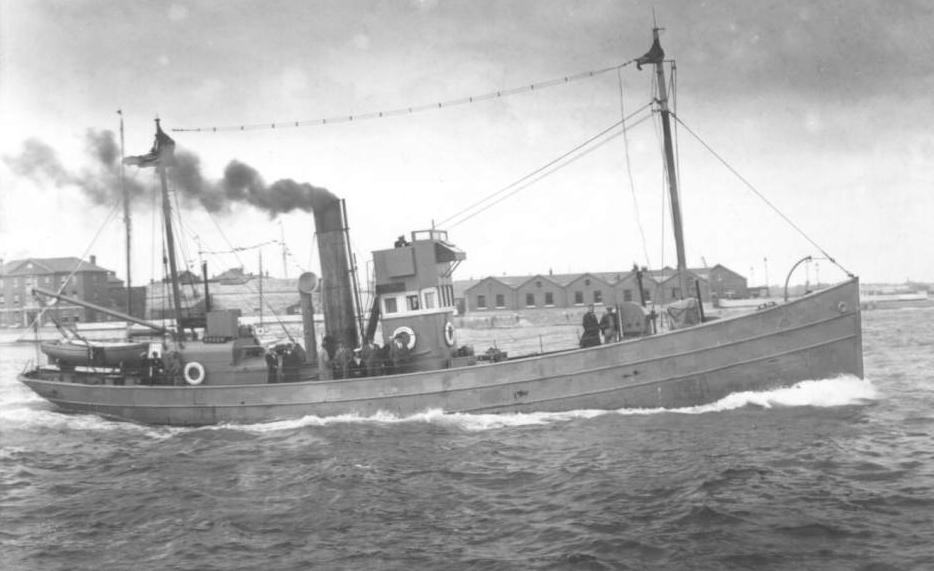
Navy Drifter
HMD Cape Colony was a British Navy Drifter launched in 1908 by Richards & Co, Lowestoft, she was sank by a mine from the German submarine UC-11 on the 8th of January 1917 off Harwich. There were no casualties
HMD Forward III
- Type. Drifter
- Class. None
- Builder. John Chambers
- Ordered. 1906
- Laid Down. 1907
- Launched. 1907
- Commissioned. 1914
- Fate. Sank 31/03/1917

Navy Drifter
Utility Drifter built by John Chambers & Co. Ltd., Lowestoft in 1907 and operated at the time of her loss by Royal Navy, was a British navy drifter of 89 tons. On March 31st, 1917, Forward III was sunk by a mine from the German submarine UC-6 south of the Shipwash light vessel. 10 persons were lost.
HMD Frons Olivae
- Type. Navy Drifter
- Class. None
- Builder. H. Fellows
- Speed. 12 knots
- Ordered. 1910
- Laid Down. 1911
- Launched. 1912
- Commissioned. 1914
- Fate. Sank 12/10/1915
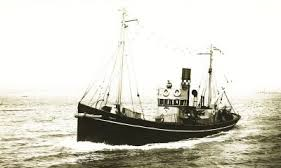
HMD Frons Olivae
HMD Frons Olivae was a Naval Drifter built by H .Fellows, Great Yarmouth in 1912, she was sunk by a mine from the German Submarine UC-5 on the 23th October 1915 with 11 Persons Lost.
Monitors.
A warship used for coastal bombardment. They were slow, lacked protection, were armed with a few large guns and had a shallow draught. Not suitable of fighting against other warships.
HMS Severn
- Type. Monitor
- Class. Humber
- Pennant. D70
- Builder.Vickers
- Ordered. 1911
- Laid Down. 1912
- Launched. 24/08/1912
- Commissioned. 1914
- Fate. Scrapped 23/03/1923
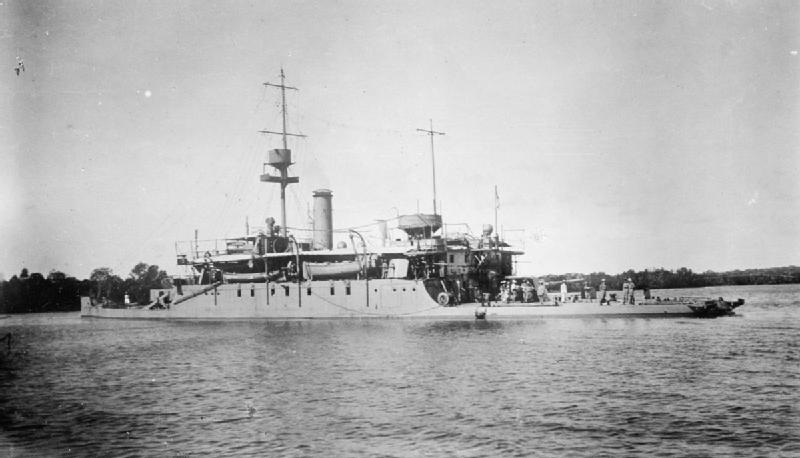
HMS SEVERN
HMS Severn was a Humber-class monitor built by Vickers for Brazil and launched on the 24th August 1912. She was purchased by the Royal Navy in 1914 on the outbreak of the First World War along with her sister ships Humber and Mersey. She had a relatively successful career during the First World War with at least three engagements. At the Battle of the Yser in 1914, off the coast of Belgium, she bombarded German troops as well as artillery positions. On 10 October 1914, she survived an attack by the submarine U-8 when a torpedo passed under the shallow draught vessel. In early 1915, the twin turret was removed and replaced by two shielded single 6 inch guns fore and aft. In July 1915, she was towed to the Rufiji River delta in German East Africa where she and Mersey then assisted in the destruction of the German light cruiser SMS Königsberg.
She was sold for breaking up on 9 May 1921 to Ward, of Preston, and arrived at their yards on 23 March 1923.
We are adding more information to this site on a regular basis, if you wish to submit any photos or provide any information on naval vessels that were based or visited Harwich, then please use the contact page at the bottom of the screen.
Copyright Ownership.
We attempted to get the consent of copyright holders to use this material for nearly all of the photographs on the website.
In the few cases where names are available, a thorough search was made using telephone directories, photographic copyright directories, People Search and Google Area Search. None of the copyright owners could be traced in this way and we believe we have exhausted all reasonable avenues.
The consensus opinion of these authorities was that if any two of the following situations applied we would be deemed to have taken sufficient action to avoid infringing copyright laws:
- Reasonable efforts made to contact the copyright holder
- No financial gain will be made in relation to the photos
- A letter is obtained from present owner of photos
- There is a proviso included stating that if offence is caused document will be removed
The website owner undertakes to remove any photograph from the website where offence is caused. All the above conditions have therefore been met.
← Sloops, Patrol Vessels & Tugs – World War 2 Other Vessels – World War 1 →
